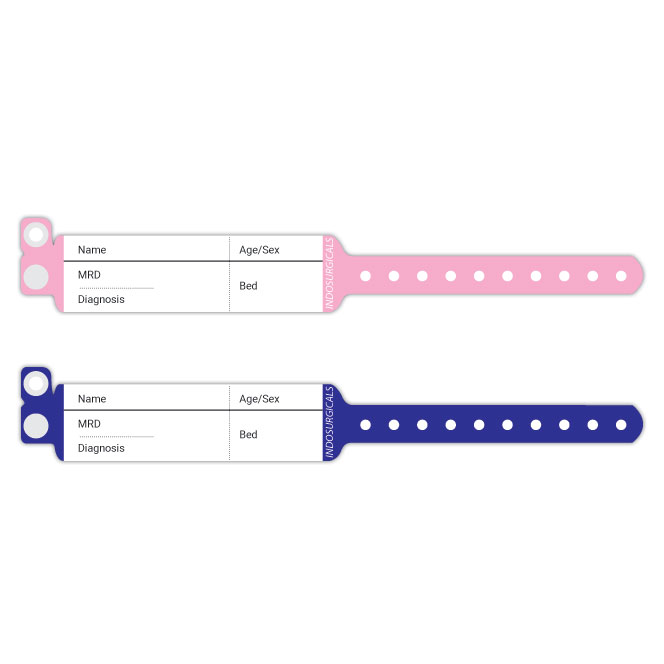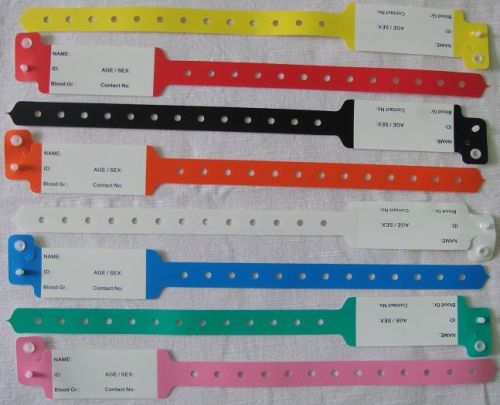Why Investing in a Premium Patient Identification Band is Crucial for Medical Institutions
Why Investing in a Premium Patient Identification Band is Crucial for Medical Institutions
Blog Article
Exploring the Numerous Sorts Of Patient Identification Band Used in Medical Facilities
In the complex world of healthcare, the vital duty of Patient Identification bands commonly goes unnoticed. These bands, differing from easy paper wristbands to advanced RFID bands, create the foundation of Patient security protocols, guaranteeing accuracy in Patient Identification.
Comprehending the Value of Patient Identification Bands
While they might seem like plain devices, Patient Identification bands play a crucial function in clinical centers. These bands offer as a crucial tool for validating Patient identification, protecting against clinical mistakes related to misidentification. Patient Identification bands additionally aid in simplifying administrative jobs, ensuring exact record-keeping and billing.
Traditional Paper Wristbands: Their Use and Limitations
Standard paper wristbands have actually been a staple in Patient Identification throughout various clinical facilities. While their use prevails, they nurture certain constraints that might influence their efficiency in Patient administration. This area will certainly concentrate on the range of their application and the fundamental disadvantages connected with their usage.
Paper Wristbands: Use Scope
In the world of Patient Identification, paper wristbands have actually long held a crucial function. These bands are generally utilized in outpatient setups, where the Patient's keep is short-lived. The wristbands contain essential details such as the Patient's name, day of birth, and a distinct Identification number. This simple, yet efficient system, permits clinical professionals to promptly and accurately recognize patients, guaranteeing the correct treatment is provided. Paper wristbands are also made use of in emergency situation situations, where rapid Identification is paramount. Their usage encompasses occasions like blood donation drives and mass inoculation programs, even more stressing their versatility. Despite improvements in innovation, the modest paper wristband continues to be a trustworthy and economical remedy for Patient Identification in different healthcare circumstances.
Limitations of Paper Wristbands
In spite of their widespread use, paper wristbands are not without their downsides. Their physical durability is just one of the considerable constraints. Exposure to water, sweat, or misuse can render them unreadable and even create them to degenerate. Additionally, paper wristbands typically lack the technological capabilities of even more modern choices, such as barcoding or RFID chips, limiting their capability to just displaying written information. The inability to upgrade or modify the information on the wristband is an additional drawback. In addition, if the details is handwritten, legibility can be endangered, leading to potential misidentification. Paper wristbands can create pain or skin irritability to some people, especially when worn for extended durations.
Barcoded Wristbands: Developments in Patient Identification
While Patient Identification has actually long been a crucial element of healthcare, the development of barcoded wristbands symbolizes a substantial jump forward. These bands take advantage of the simplicity of barcoding technology, permitting Patient info to be promptly scanned and accessed. They boost the speed and accuracy of Patient Identification, minimizing the risk of clinical errors associated with misidentification. Barcoded wristbands are economical, very easy to create, and get rid of handwriting mistakes usual with manual systems. They are not without restrictions. While they supply enhancements over conventional bands, the barcode can end up being used or smudged, making it unreadable. Despite this, barcoded wristbands remain a crucial tool in contemporary medical care setups, representing the crossway of innovation and Patient treatment.
Superhigh Frequency Identification (RFID) Bands: an Action In The Direction Of Futuristic Medical Care
The evolution of Patient Identification bands has actually brought concerning the appearance of Radio Regularity Identification (RFID) Bands (patient identification band). These innovative tools existing essential benefits for medical care centers, providing a much more reliable and highly progressed methods of Patient Identification. The execution of RFID in healthcare is a significant action in the direction of a more futuristic More about the author technique to Patient administration and safety
Understanding RFID Bands

RFID Bands: Key Advantages
Embracing a future where innovation and medical care combine, superhigh frequency Identification bands supply a number of crucial benefits. Mostly, these bands improve Patient security by supplying exact, immediate Identification, therefore Visit Website decreasing medical mistakes. RFID bands can keep a vast amount of Patient information, consisting of case history and allergies, allowing personalized care. They also enhance management tasks, as the automated data access replaces hands-on processes, improving effectiveness and minimizing documentation. Moreover, RFID bands use real-time tracking of clients, essential in risky environments such as surgery or intensive treatment. These bands are durable and immune to ecological aspects, making certain consistent capability. On the whole, RFID bands stand for a considerable innovation in Patient Identification modern technology, profiting both individuals and medical care companies.
Implementing RFID in Healthcare
These bands give a smooth method to track and recognize patients, guaranteeing their security and improving efficiency in treatment procedures. RFID bands reduce clinical mistakes by offering precise Patient Identification, which is critical in avoiding misdiagnosis or wrong medication management. Thus, the application of RFID bands is a considerable step towards boosting Patient safety and security and go to my site health care shipment.

Color-Coded Wristbands: Assisting in Quick and Accurate Medical Diagnosis
In the bustling environment of a clinical facility, color-coded wristbands have arised as crucial devices for swift and exact Identification of a patient's medical problem. These wristbands, worn by individuals, lug specific shades that represent various medical problems or conditions. For circumstances, red can show allergy dangers, while yellow may represent a fall risk. This system is made to use immediate aesthetic hints to doctor, boosting Patient security and care high quality. In emergency situation scenarios, making use of these wristbands permits for quick decision-making. The performance of color-coded wristbands depends on the uniformity of shade analysis throughout healthcare establishments, requiring usual requirements for consistent application.
Techniques for Effective Execution and Administration of Patient ID Bands
Accomplishing optimal use of Patient Identification bands necessitates a well-structured approach for their implementation and monitoring. Patient education and learning is also essential; people have to comprehend the objective of the bands and the requirement for their continuous wear. It's important to have a back-up plan in location, such as barcode scanning or biometrics, to make sure that Patient Identification is never compromised.
Final thought
Patient Identification bands are crucial in medical centers to make certain safety and security and precision. Efficient implementation and monitoring of these bands can considerably decrease medical errors, boost performance, and boost general Patient treatment.
These bands, differing from easy paper wristbands to sophisticated RFID bands, develop the backbone of Patient safety protocols, ensuring accuracy in Patient Identification.The development of Patient Identification bands has brought concerning the introduction of Radio Frequency Identification (RFID) Bands. Generally, RFID bands represent a substantial improvement in Patient Identification innovation, benefiting both patients and health care suppliers.
RFID bands lower medical mistakes by providing exact Patient Identification, which is essential in preventing misdiagnosis or wrong medication management. Patient education and learning is likewise important; patients must understand the purpose of the bands and the requirement for their continuous wear.
Report this page